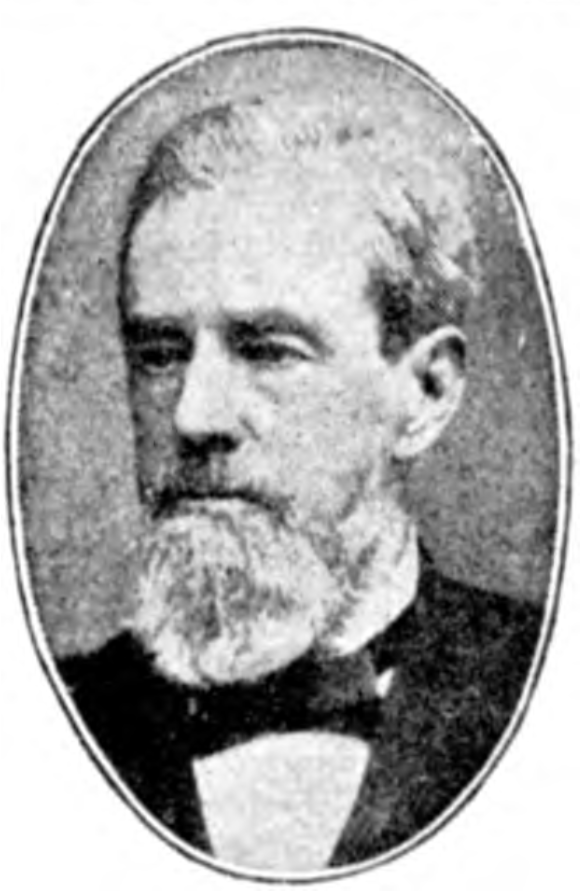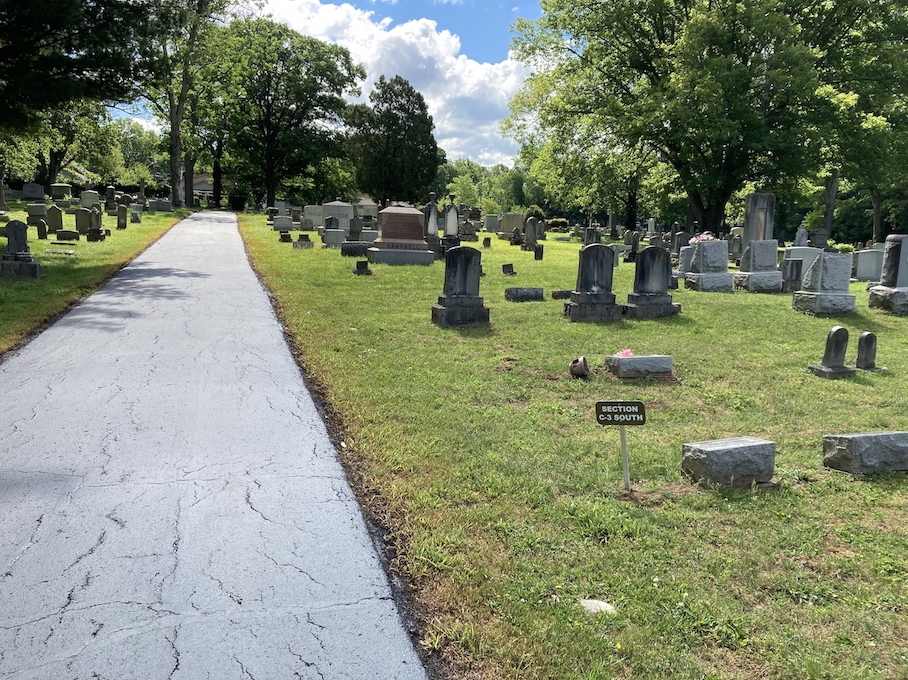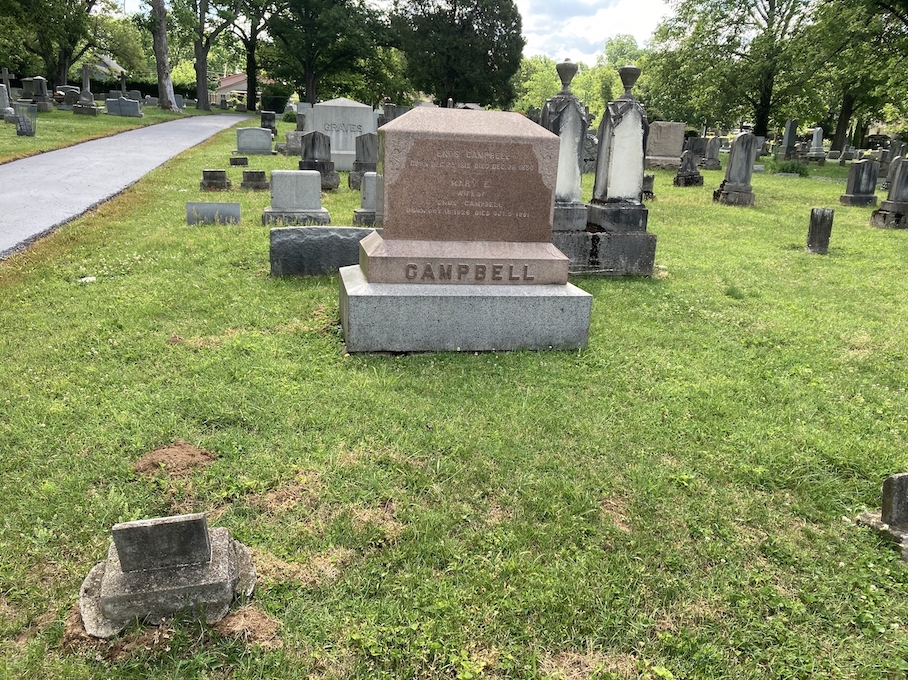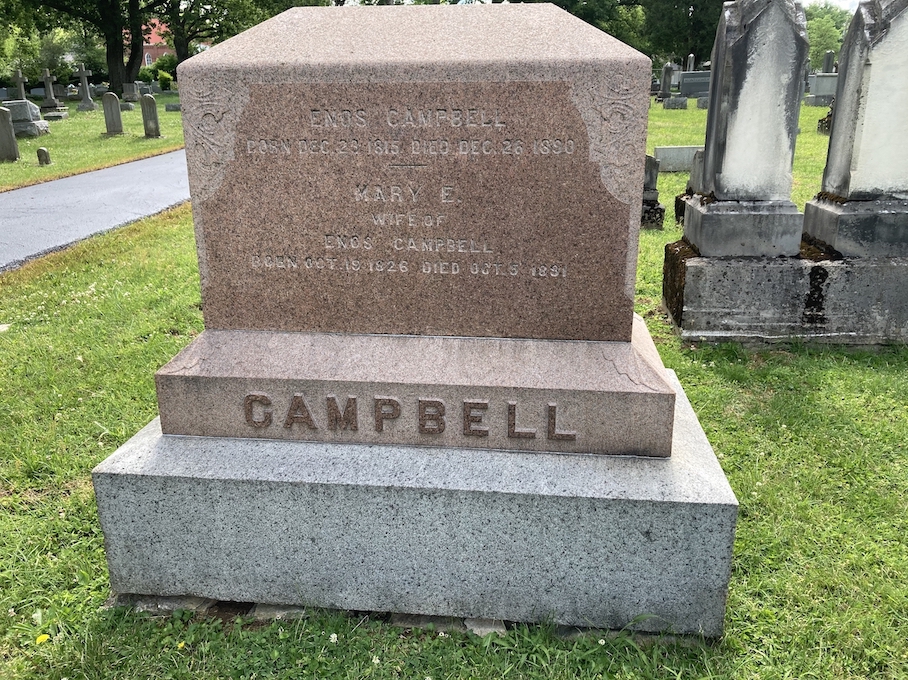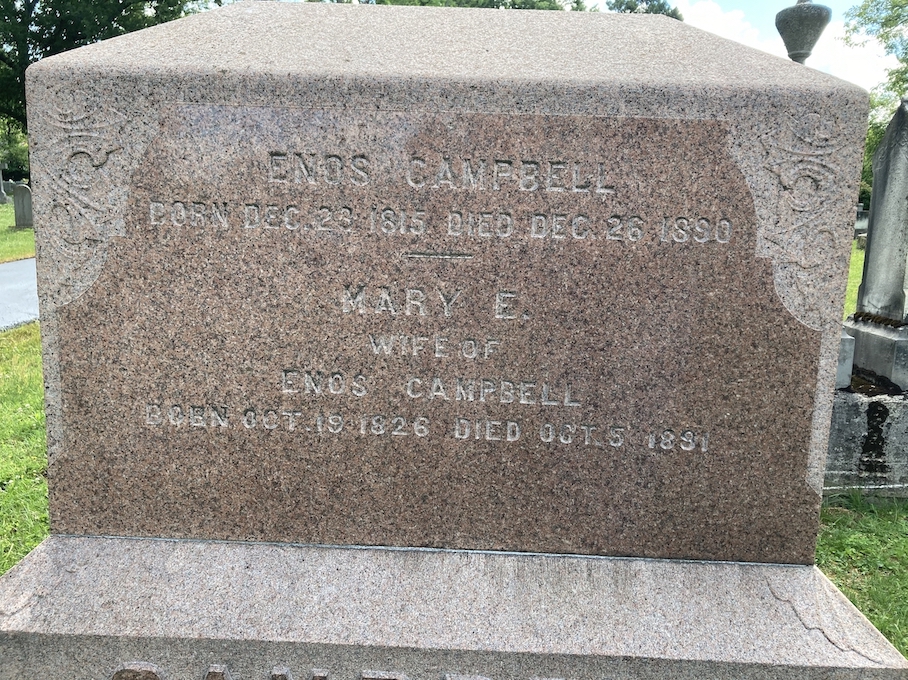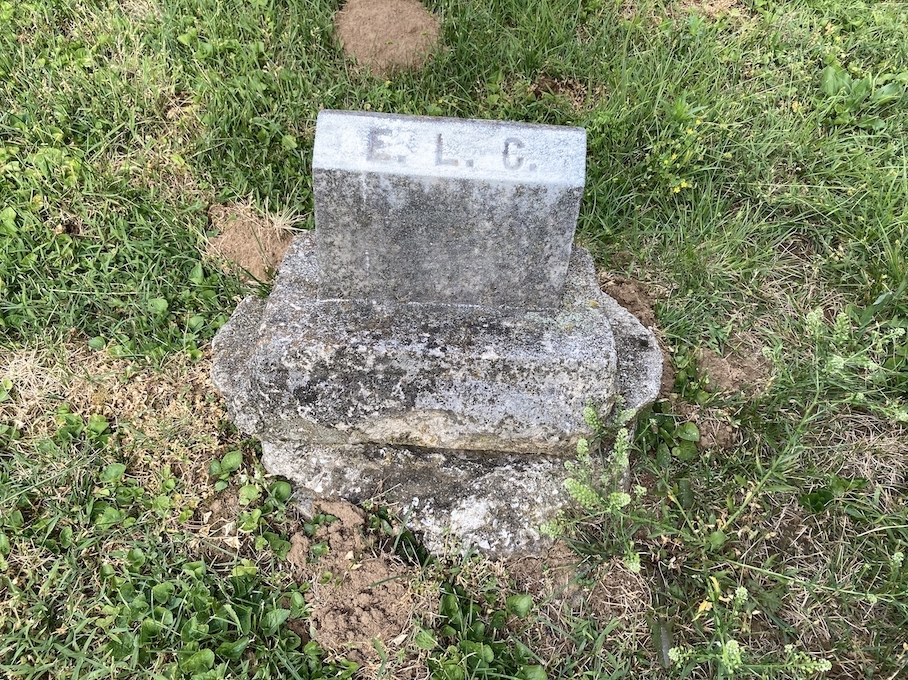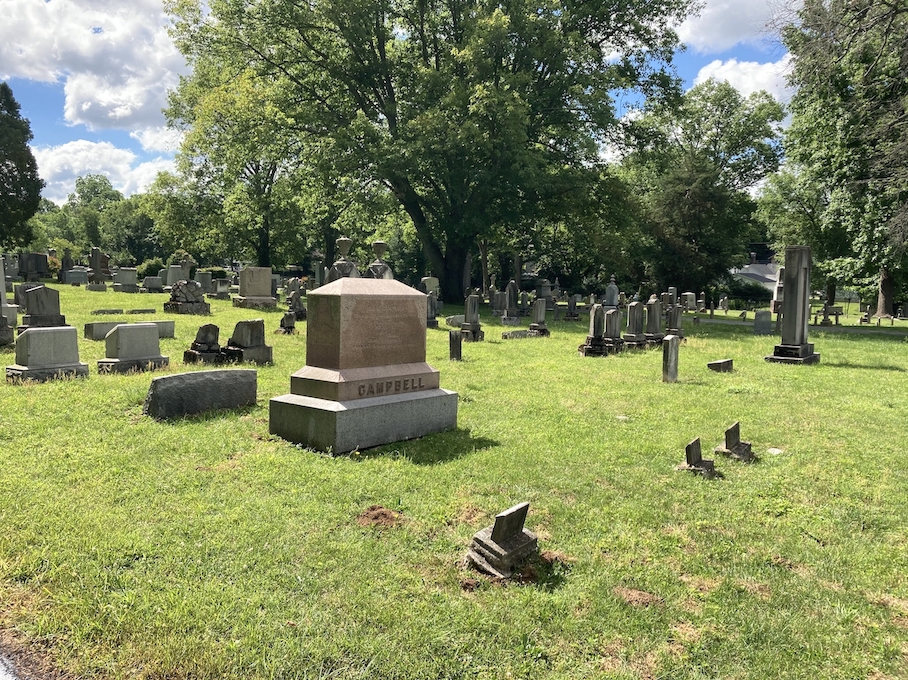Enos Emmanuel Campbell
1815-1890
![]()
The Life Of Enos Campbell
Enos Emmanuel Campbell was born in Newry, County Down, Ireland. He was the son of Archibald Campbell (1766-1857) and Ellen Carr (1788-1858). Archibald was the younger brother of Thomas Campbell (1763-1854), and therefore, the first cousin of Alexander Campbell (1788-1866).
Enos was educated at Queens College in Dublin and the University of Belfast in Northern Ireland. At the age of seventeen, he boarded a ship headed for the new world. Arriving in Bethany, Virginia, in 1832, he moved in with his cousin's family. As the Campbell household rang loudly with children, it quickly became Enos' work to tutor and educate them, while the parents were busy with other tasks.
One story of those days survives concerning Enos' great love for music. He was a most capable violin player, and he owned a good quality instrument. He would often play for the children when times called for a break from their daily drills. As the Campbell mansion was located on the main road between the Alleghanies and the west, an unexpected problem ensued. Travelers were distracted by the music. When Enos played for the children, passers-by would enter the yard and stand at the schoolhouse that stood beside the mansion to enjoy the entertainment. Finally, the lady of the house, Mrs. Selina Campbell, put a stop to daily playing, suggesting that he go and play somewhere else so as not to cause people to think that the Campbells were operating a society hall.
The Campbell Home was a working farm. Not only so, but Enos' cousin was a great debater, writer, and editor of the Millennial Harbinger. In 1838, Enos went into business with Robert H. Forrester to open a retail bookstore in Pittsburg, Pennsylvania, only a short distance away, where they sold all the writings of Alexander Campbell.
However, his stay in the east was short-lived. The call to the west pulled him to go to Kentucky. Not long after he arrived there, he met and married Mary Elizabeth Ball of Versailles in Woodford County. The date of their marriage was August 10, 1844. By this time, Enos was preaching regularly for the church in Versailles, assisting P.S. Fall at Frankfort, and preaching some in nearby Lexington.
In August 1846, Enos Campbell opened a Ladies' Boarding School at Versailles (The Disciples Of Kentucky, Fortune, p.356). In this effort, Alexander Campbell describing Enos' work, said, "We can say from long acquaintance with our old friend, the Principal, that he is an accomplished gentleman and an excellent scholar. Enthusiastically devoted to the profession of teaching, he devotes all his energies to the improvement of his pupils, and knowing the superiority of his intellect and talents, we confidently predict distinguished success for his new institution. Under the signature of E., he is known as one of the best of the present writers for the Millennial Harbinger: his essays on Popular Literature having been deemed worthy of republication in the London Christian Messenger. We feel assured that the fine and gifted intellect of our young brother only needs to be known to be appreciated by the people of Kentucky, and to insure for him extensive usefulness." (MH, 1846, pgs. 430,431)
On June 29, 1847, Enos and Mary had their first child, a son named Ernest Louis. Within a couple of years, the family moved to Lexington, where they held membership with the Main Street Christian Church (the old Hill Street church), where Enos served as an elder in the congregation.
In 1850, the family moved southwest of Lexington about200 miles, where they settled in Hopkinsville in Christian County. John M. Barnes, the preacher for the church there and director of South Kentucky College, had recently died suddenly, leaving the work in much need for a reliable minister and school administrator. Having the Campbells involved in the work was most pleasant and deeply appreciated by the congregation. Growth followed in a significant way.
Enos Campbell was a vigorous supporter of the American Christian Missionary Society, organized in Cincinnati, Ohio, in 1849. Soon after its organization, there was a great desire to evangelize in Africa. In the interest of sending a black missionary to Liberia to preach, Enos and the Hopkinsville church purchased a slave by the name of Alexander Cross. He was taught for six months by Enos and the elders of the church. Then, in 1853, with his wife and son, Alexander was sent to evangelize under for the American Christian Missionary Society's flag as its second missionary. Sadly, after two years, news arrived that Cross died of sunstroke on the mission field. (Captives of the Word: A Narrative of the Christian Church (Disciples of Christ), the Christian Churches (Independent), and the Churches of Christ. Garden City, N.Y.: Doubleday & Co., 1969, p,127.)
His lifelong commitment to evangelism caused Enos to never give up on an organized plan to evangelize the world. He, along with W.T. Moore, W.K. Pendleton, and others, came together in 1869 to adopt a formal method of raising money for missions in Louisville, Kentucky. Called theLouisville Plan, it did not enjoy a following in the south as much as in the northern churches.
In 1855 Enos and Mary were running a seminary for young ladies called Hopkinsville Female Institute. The following year, they had their second child, Susan Alexine, born on September 19, 1856.
During the Civil war, the challenges of the work in Kentucky were like most places, dire at times. The authors of two biographies on David Lipscomb preserve a story during the war when Lipscomb made a trip to Hopkinsville. The year was 1861. Apparently, at the time, southern troops held the town. It meant that many "volunteered" their food and personal items to feed soldiers. The story centers around how the soldiers began disassembling a building on the campus of Southern Kentucky College for firewood. Knowing the Nashville visitor's clout, Enos asked brother Lipscomb, who was staying in his home, to go to the authorities to request that the destruction cease. (A Voice Crying In The Wilderness, Hooper, p.71 /Life And Times Of David Lipscomb, West, p.77). Lipscomb was able to intercede for Campbell and the school building was saved.
One young man influenced by Enos Campbell, who served for a while as a teacher in his Southern Kentucky College, came to know him after having served in the Confederate Army. When captured by northern troops, he signed a non-combatant oath and left the army. Being from southern Tennessee, he, his mother, who was already a New Testament Christian, and his siblings, then moved to Hopkinsville. Adjoining themselves to the local church of Christ in that city, this former soldier was exposed to the teachings of Enos Campbell and others in the church. Later, it was reported that another one of the elders, B.C. Campbell, led him to see the need to be baptized for the remission of his sins. Another elder, E.H. Hopper, baptized the young man into Christ on his twenty-first birthday, July 10, 1864. In the years to come, this promising young brother became known from coast to coast as one of the greatest evangelists of the late 19th and early 20th centuries. His name—Theophilus Brown Larimore.
In 1866, the Campbells moved to Jacksonville, Illinois. B.W. Stone had lived his last years there and had died 22 years prior to Enos' arrival. The church had just gone through a split over some false teachings of a preacher by the name of W.S. Russel. Very quickly, Enos was called upon to play the role of healer. In the end, the factions were dispelled, and unity in the congregation was regained.
Enos had a way of inspiring young people. It was around February of 1867, while at Jacksonville, he had the opportunity to teach an up-and-coming young man by the name of Benjamin Cassel Deweese. Ben would later devote his life to preaching the gospel and educating young people for the cause of Christ. In 1880 B.C. Deweese was appointed the Bible Department head at Eureka College in Eureka, Illinois. He later moved to Lexington, Kentucky, where he spent the remainder of his life connected with the College of the Bible.
As has been noted, Enos Campbell was a great lover of music. When churches began to add the instrument to their public worship services, he was an avid supporter of it, seemingly without hesitation. He wrote an article on the subject that appeared in the January 1870 issue of theMillennial Harbinger. The title of the piece was "Musical Culture." Beginning on page 22, he set out evidence of the nature of music, the basic tones of which are creations of God. He further explained that of all creation, only man can produce harmony and that such harmony is God's gift to man to be used, in all its forms, to enhance the emotive spirit. He wrote of how some men are so created that they can sing, while others had no understanding of it, calling them "songless." In any case, music should be seen as a blessing from God to be used to enhance our awareness of Him, whether at home around the fireplace or in the public worship assembly.
Campbell's views were not met with ready acceptance by all. The loudest voice seemed to come from his cousin by marriage, Selina Huntingdon Campbell. In an open letter that appeared inThe Apostolic Times, in the July 1870 issue, on page 99, she sternly rejected the January article. She emphasized that her late husband decried the use of instrumental music in worship and that she strongly disagreed with the conclusions she read in the article by her cousin. Read these articles here.
In 1873, the Enos Campbells moved to St. Louis, Missouri, where he began preaching for the Central Christian Church. The congregation had become known as such as of 1867 when the Vine Street church of Christ divided over the instrument. Central was the instrumental group.
In 1883, the Campbells moved to St. Paul, Minnesota, where Enos began preaching for the church in that city. After four years, he retired from local work. The family moved back to Versailles, the home of his wife, Mary.
While on a preaching trip to Wilmington, Clinton County, Ohio, Enos was stricken suddenly with what appeared to be a heart attack while walking down a city street. It was there that he breathed his last, on December 27, 1890. His body was returned to Versailles, where he was laid to rest in the City Cemetery. In less than a year, his wife, Mary, while on a visit to Boston, Massachusetts, died suddenly, October 5, 1891. Her body also was returned to Versailles to be buried beside her husband.
As somewhat of a side note, heart problems appeared to pass on genetically. Briefly, their son, Ernest, would ultimately grow up to marry Mary Grafton (02.1847-11.19.1913) in 1871. His life's work was that of an attorney. He lived for a time in Colorado, and in 1882 ran for governor, but lost. Then, he moved to California and had a law practice there. Ernest died of a heart attack in Piqua, Miami County, Ohio, on the way home from a business trip in Washington, DC, in May 1903. His body was returned to Versailes for burial in the family plot.
The family and work of Enos Campbell are not as well known as that of his uncle and cousin, but for certain, his place in history deserves to be researched and remembered. The story of the American Restoration Movement would be lacking without the contributions by Enos Campbell.
-Scott Harp, July 13, 2020
![]()
Minneapolis Minister
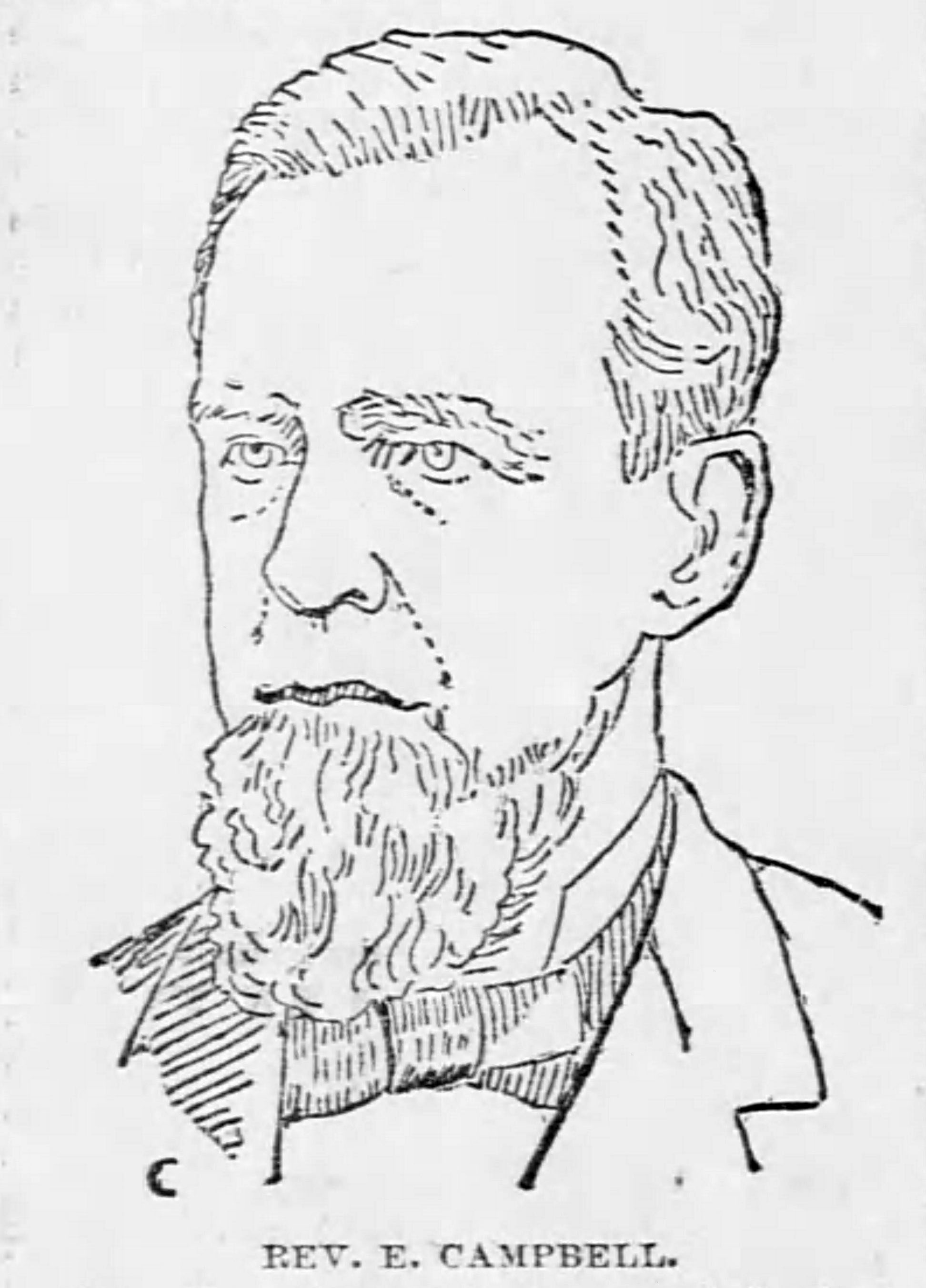
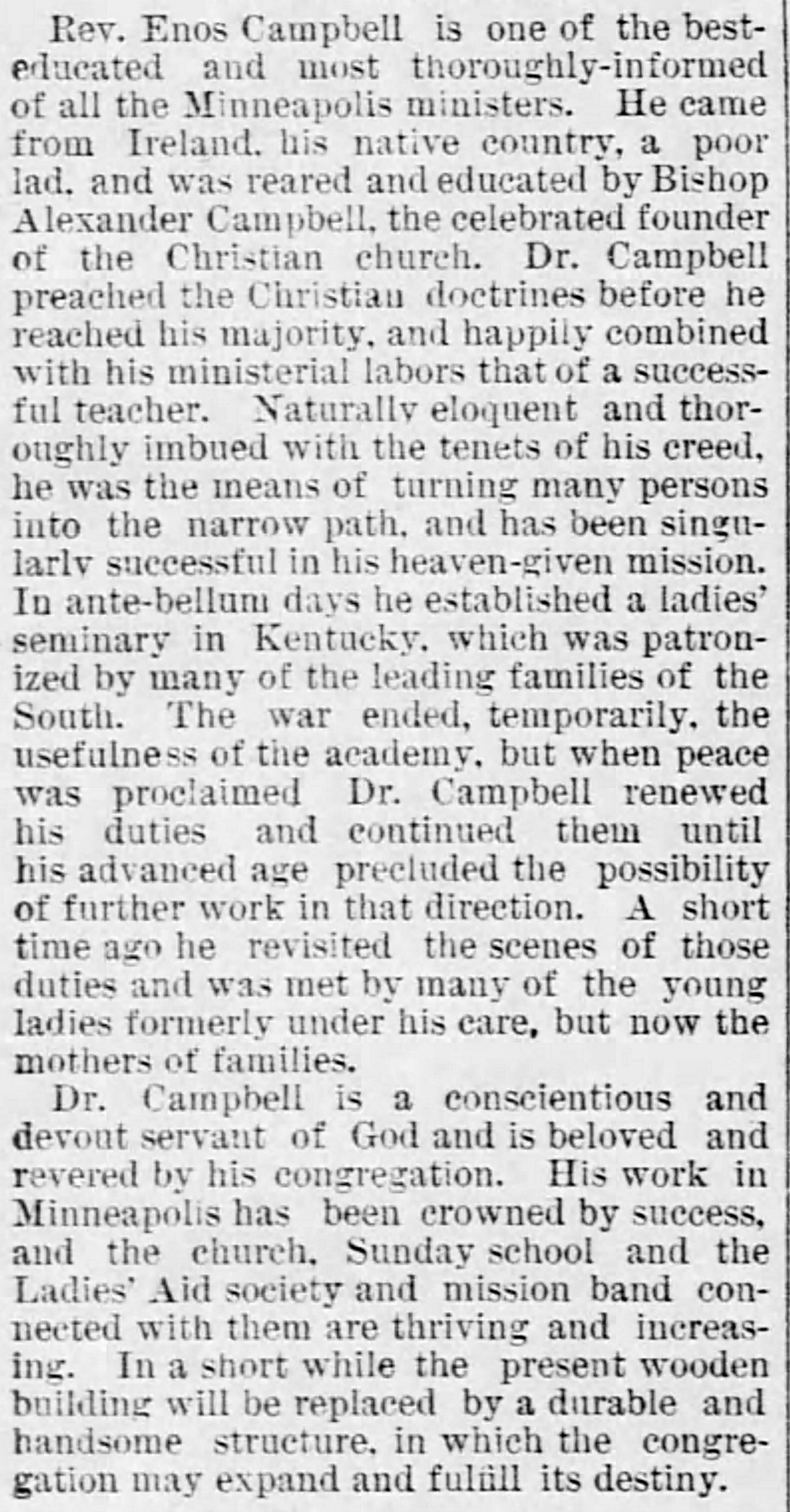
The Saint Paul Globe, Minn. Monday, November 9, 1885, page 3
![]()
Enos Campbell At Hopkinsville in 1850
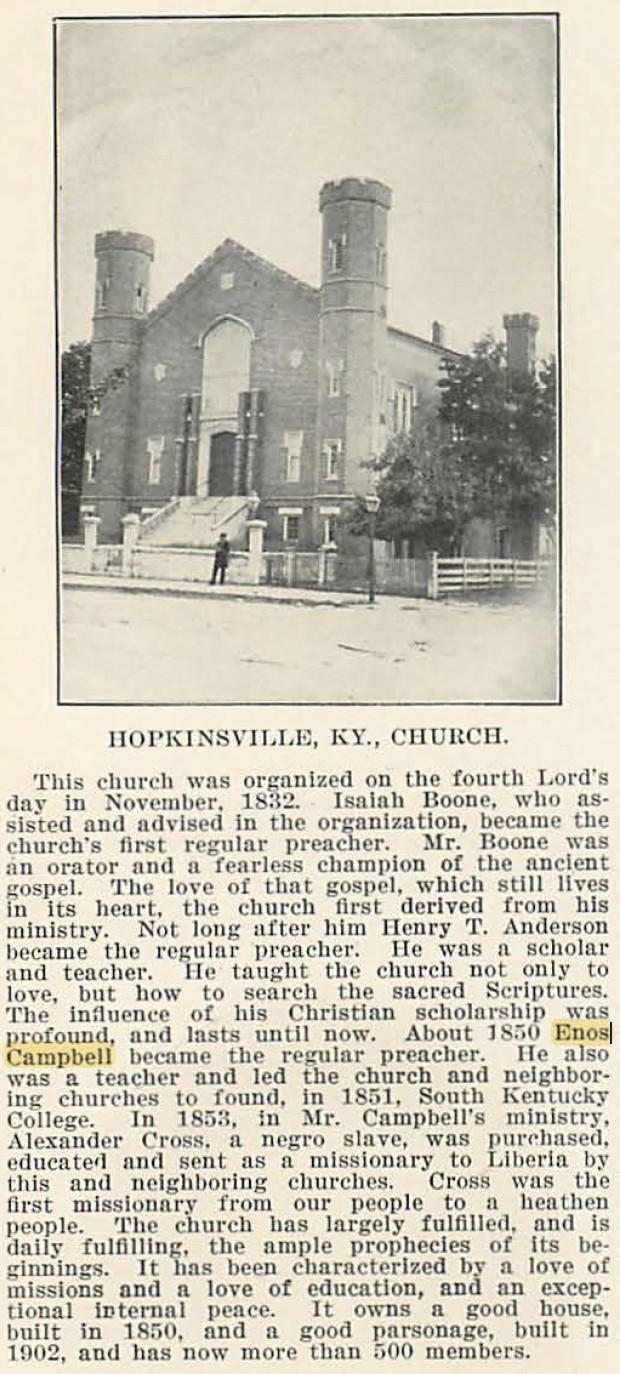
Churches Of Christ, John T. Brown, page 554.
![]()
Central Christian Church, Jacksonville, Illinois
Where Enos Campbell preached in 1869
church building dedicated July 4, 1869
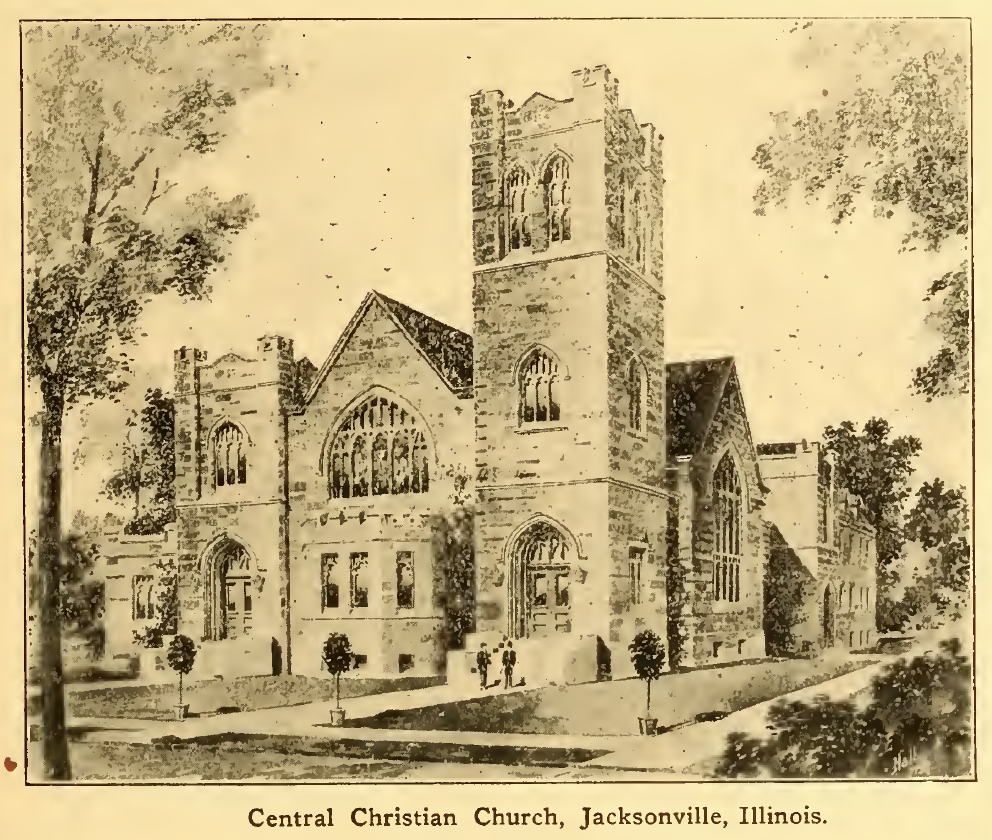
Source: The Christian Evangelist, May 3, 1906, p.569
![]()
Chronology Of The Life Of Enos Emmanuel Campbell
1815
December 28
Enos Campbell (EC) was born in Newry, County Down, Ireland. His was the son of Archibald Campbell (1766-1857) and Ellen Carr (1788-1858). Archibald was the younger brother of Thomas Campbell (1763-1854), and therefore, first cousin of Alexander Campbell (1788-1866).
Youth
Attended Queens College in Dublin and University of Belfast in Northern Ireland
1832
At 17 yrs old, EC came from Ireland to Bethany, Va. Begins tutoring the Campbell children. EC is a lover of music and a capable violin player (Home Life And Reminiscences of Alexander Campbell By His Wife, Selina Huntingdon Campbell, p.471) Lives with family for 10 years.
1838
EC, with Robert H. Forrester, begin a retail Bookstore at No. 117 Wood Street, Pittsburg, PA, that will sell all of Alexander Campbell's writings. (MH. 1838, p.335)
1844
August 10
Marriage To Mary Elizabeth Ball, in Versailles, Woodford County, Kentucky
1845
EC fills the pulpit at Frankfort, KY, but most of the preaching there was still done by P.S. Fall. (FF, 11.30.1976, p.11[763])
1846
August
EC Conducts Ladies' Boarding School at Versailles (The Disciples Of Kentucky, Fortune, p.356) Alexander Campbell, in this effort, describing EC said, "We can say from long acquaintance with our old friend, the Principal, that he is an accomplished gentleman and an excellent scholar. Enthusiastically devoted to the profession of teaching, he devotes all his energies to the improvement of his pupils, and knowing the superiority of his intellect and talents, we confidently predict distinguished success for his new institution. Over the signature of E., he is known as one of the best of the present writers for the Millennial Harbinger: his essays on Popular Literature having been deemed worthy of republication in the London Christian Messenger. We feel assured that the fine and gifted intellect of our young brother only needs to be known to be appreciated by the people of Kentucky, and to insure for him extensive usefulness." (MH, 1846, pgs. 430,431)
1847
March
At Versailles, KY – hosts John T. Johnson for a 10-day meeting.
1847
June 29
Birth of son, Ernest Louis Campbell, Versailles, Woodford Co., Ky. Marries Mary Grafton (02.1847-11.19.1913) in 1871. His life work was an attorney. He lived in Colorado, and in 1882 ran for governor, but lost. Moved to California and had a law practice there. Ernest dies in Piqua, Miami, Ohio on the way home from a business trip in Washington, DC in May, 1903.
1849
EC lives in Lexington, KY, and is one of the elders of the Main Street Christian Church there with William Poindexter, John G. Allen, Jos. Warson [Wasson] (Central Christian Church (DOC) 175 Years In Lexington, Dunnavant, p.27)
1849
December
Alexander Campbell visits his cousin EC in Lexington on a trip to the south, enjoying a "comfortable repose." (Adventures In Freedom, Wrather, v.3, p.184)
1850-1852
Minister of Hopkinsville Christian Church, Hopkinsville, Ky – Becomes director of South Kentucky College (SKC)
1852
In the interest of sending a black missionary to Liberia to preach, EC and the Hopkinsville church purchase a slave by the name of Alexander Cross. He is taught for six months by EC & Elders of the church. Then, he was sent in 1853 with his wife and son to evangelize under for the flag of the American Christian Missionary Society as its second missionary. Two years, (1855) Cross died of sunstroke on the field. (Captives of the Word: A Narrative of the Christian Church (Disciples of Christ), the Christian Churches (Independent), and the Churches of Christ. Garden City, N.Y.: Doubleday & Co., 1969, p,127.)
1855-1864
Runs a Seminary for Young Ladies called Hopkinsville Female Institute (MH, 1855, p.146)
1856
September 19
Birth of daughter, Susan Alexine Campbell, Hopkinsville, Christian County, Ky. (She married Walter Lenoir Church (1847-1931) on December 28, 1876. She died Eugene, Lane County, Oregon, September 26, 1932
1861
Hosts David Lipscomb, while on a visit to Hopkinsville duringime the war. EC entreats Lipscomb to intervene on behalf of SKC, as southern troops are dismantling buildings for firewood. (A Voice Crying In The Wilderness, Hooper, p.71 /Life And Times Of David Lipscomb, West, p.77)
1864
EC is superintendent of Hopkinsville Female Institute with J.C. Campbell. T.B. Larimore is one of his teachers. (The Man From Mars Hill, J.M. Powell, p.40)
1866
EC assisted in uniting a splintered group in Jacksonville, Illinois after being divided over false teachings by W.S. Russel (Hist. of the Disciples In Illinois, Haynes p.338)
1867
February
Baptizes B.C. Deweese (1851-1924) (Eureka College, p.197)
1868
EC's daughter Ellen marries – Ceremony at Mammoth Cave, Ky
1869
January 17
Living in Jacksonville, Illinois – Preaches for new church at Indiana and 21st Street, Chicago (The Cause In Chicago, p.20)
1869
EC participates W. T. Moore, W. K. Pendleton, and others to put together a formal plan of raising money for missions. Became known as The Louisville Plan. (Deep In The Heart Of Texas, The Life of J.D. Tant, v.2, p.132 / Christian Missions, F.M. Green, p.94 / History of the Disciples of Christ, W.T. Moore, p.562)
1869
December 30
EC preaches at Davenport, Iowa at Christian Chapel (Quad-City Times, Davenport, IA, (12.30.1869, p.1) Assist brethren who were divided (Quad-City Times, Davenport, IA 01.04.1870, p.1)
1870
January
EC writes an article entitled, "Muscial Culture," in favor of Instrumental Music in Worship. Appears in the Millennial Harbinger in the January, 1870 issue, pages 15-22 See link.
1870
March
W.H. Hopson, co-editor of The Apostolic Times, writes a rebuttal to EC's January article in the MH. His article appears in the March 10, 1770 issue of The Apostolic Times on page 382. It is copied by W.K. Pendleton, editor of MH and placed in the March issue on pages 164-171. See link.
1870
July 7
S.H. Campbell (Selina Huntingdon), wife of Alexander, writes an open letter to cousin EC that appears in the July issues of The Apostolic Times, p.99, under the title "Letter From Sister Campbell." This letter was a refutation and stern rebuke of EC for his January article on Instrumental Music in worship on page 9. See link.
1870
EC serves on the Board of Trustees for the Mound City Mutual Life Insurance Company, St. Louis, MO (The Clarion-Ledger, Jackson, Miss. 07.21.1870, p.3)
1870
Serves as Illinois State Convention President (Hist. of the Disciples In Illinois, Haynes p.102)
1871
EC is president of the Illinois Missionary Board. (AT, 08.17.1871, p151)
1873
Vine Street Church of Christ in St. Louis, MO divides over Instrumental Music in 1867. D. Pat Henderson first minister. Then in 1873 EC becomes minister of Central Christian Church, the instrumental congregation. (FF, 02.08.1944, p.5/ Hist. of Oldest Churches In Missouri, Gordon, p.53)
1874
May 19
EC preaches at the Preacher's Institute in Moberly, Missouri. (AT, 06.11.1874, p.3)
1883
EC leaves Central in St. Louis and moves to St. Paul, Minnesota to preach for the church of Christ.
1887
June
EC retires the work of preacher for the Church of Christ in St. Paul, Minnesota
1887
From St. Louis, EC attends California State Meeting, Irvington, Alameda County. (Hist. of the Disciples of Christ in California, E.B. Ware, p.239)
1890
December 27
While in Wilmington, Clinton Co., Ohio, EC dies suddenly in the streets of the city. He was 75 years old. Body returned to Versailles, Ky for burial in City Cemetery.
1891
October 5
Mary Elizabeth Ball dies at Boston, Suffolk County, Massachusetts. Burial by her husband in Versailles Cemetery.
1897
December 16
Advertisement for "The Witness of the Spirits" by James W. Zachary – containing two sermons, a diagram and two essays by EC (GA,12.16.1897.p792)
1898
December 15
Sallie W. Campbell Warren, sister of EC, died suddenly in Sedalia, Ky. Buried in Dover, Ky. Obit in (CE, 01.05.1899 p.30)
AT = Apostolic Times
CE = The Christian Evangelist
FF = Firm Foundation
GA = Gospel Advocate
MH = Millennial Harbinger
![]()
Controversy Over Enos Campbell's Support Of Musical Instruments In Worship In 1870
![]()
Directions To Grave
Enos and Mary Campbell are buried in the Versailles Cemetery at Versailles, Kentucky. The plot is on Ball Drive in Section C-3 South. Enter the cemetery from South Main Street and take the second drive that bears to the left (Ball Dr.) and easy up the drive past the mausoleum. Heading toward the rear of the cemetery look to your right for a pink marble gravestone. It will be easy to find, as most all markers in the cemetery are white/gray in color. The plot closest to the drive is the grave of Enos Campbell.
GPS Location
38°02'59.0"N 84°43'41.4"W
38.049725,-84.728160
![]()

Take second drive to left and begin looking for pink marble plot.

Ernest Louis Campbell
1845-1904
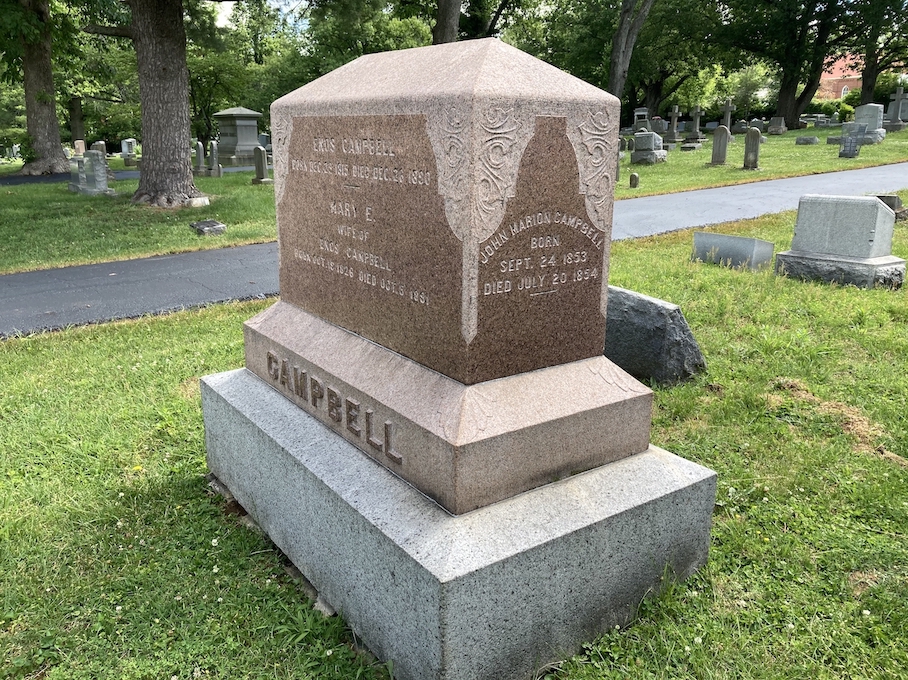
John Marion Campbell
Born September 24, 1853
Died July 20, 1854
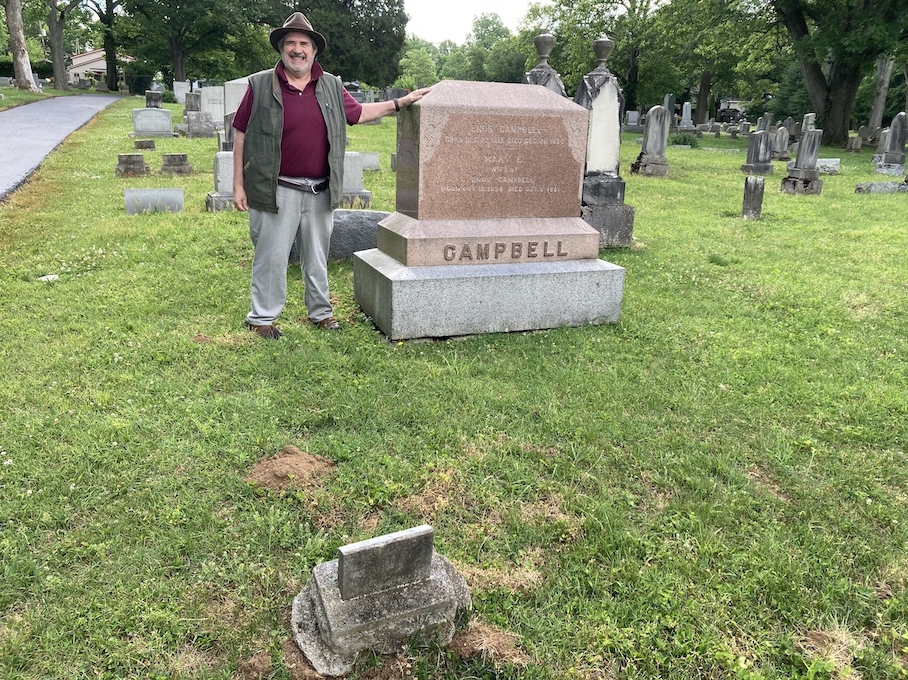
Garry L. Hill at the grave of Enos Campbell

Scott Harp at the grave of Enos Campbell

Enos Campbell
Born December 23, 1815
Died December 26, 1890
------
Mary E.
Wife of
Enos Campbell
Born
October 19, 1826
Died October 5, 1891
CAMPBELL
![]()
Photos Taken 06.11.2020
Webpage produced 07.01.2020
Courtesy Of Scott Harp
www.TheRestorationMovement.com
Special Recognition: Special thanks to Garry L. Hill who assisted me in the location of the grave of Dr. Absalom Adams. We took a day trip to north central Kentucky, visiting several graves of gospel preachers of yesteryear.
![]()
